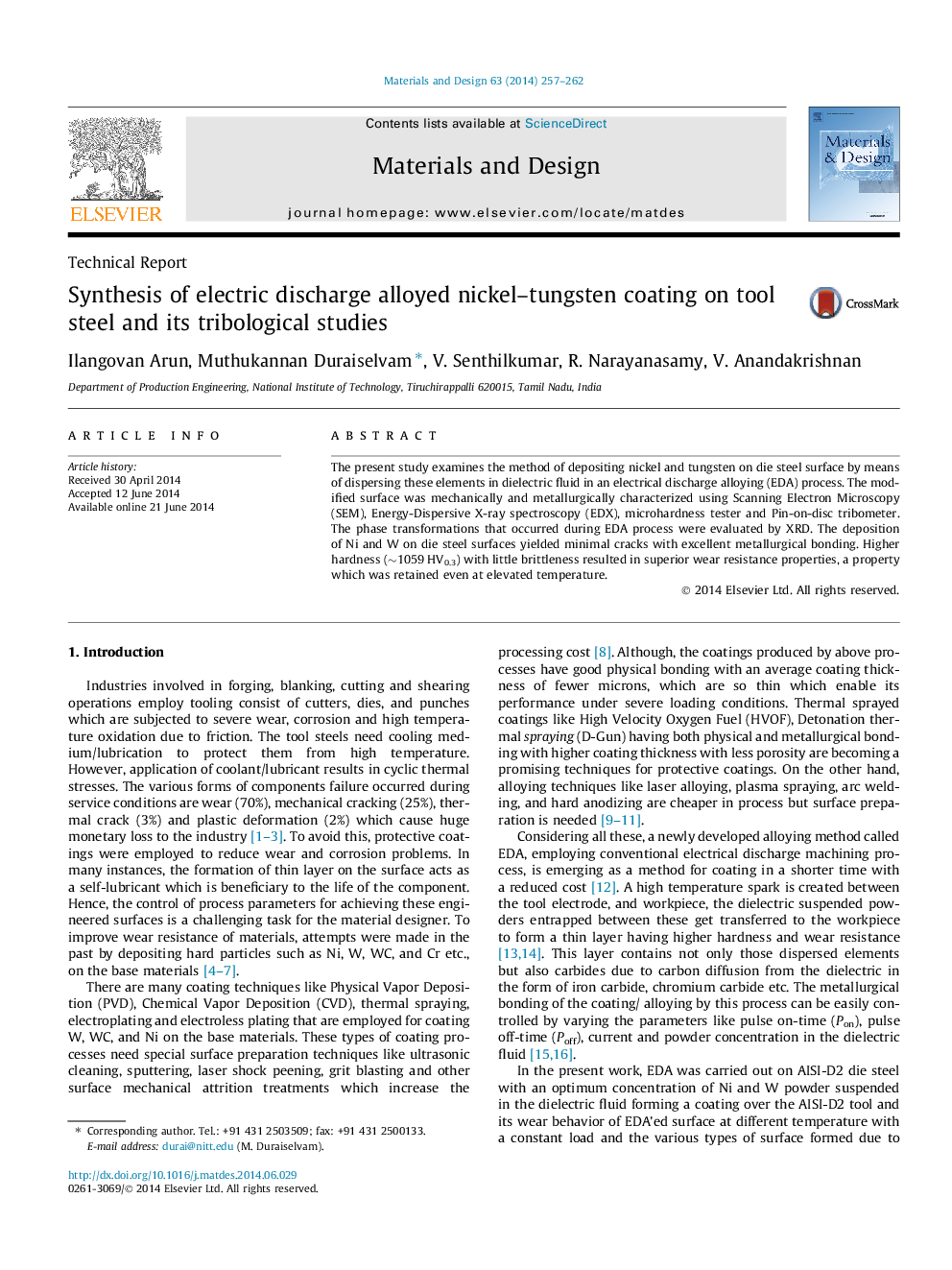| Article ID | Journal | Published Year | Pages | File Type |
|---|---|---|---|---|
| 829001 | Materials & Design (1980-2015) | 2014 | 6 Pages |
•Electrical discharge alloying/coating made on AISI D2 tool steel.•The hardness of EDA layer is three to four time higher than the base material.•The dry sliding wear tests performed on EDA layer at different temperatures.•The alloyed layer acts as a self-lubricant at higher temperature.
The present study examines the method of depositing nickel and tungsten on die steel surface by means of dispersing these elements in dielectric fluid in an electrical discharge alloying (EDA) process. The modified surface was mechanically and metallurgically characterized using Scanning Electron Microscopy (SEM), Energy-Dispersive X-ray spectroscopy (EDX), microhardness tester and Pin-on-disc tribometer. The phase transformations that occurred during EDA process were evaluated by XRD. The deposition of Ni and W on die steel surfaces yielded minimal cracks with excellent metallurgical bonding. Higher hardness (∼1059 HV0.3) with little brittleness resulted in superior wear resistance properties, a property which was retained even at elevated temperature.
Graphical abstractFigure optionsDownload full-size imageDownload as PowerPoint slide
